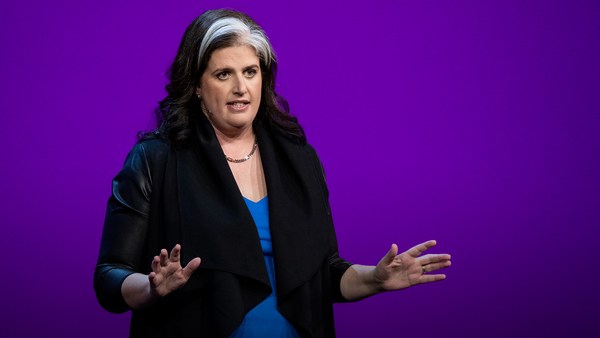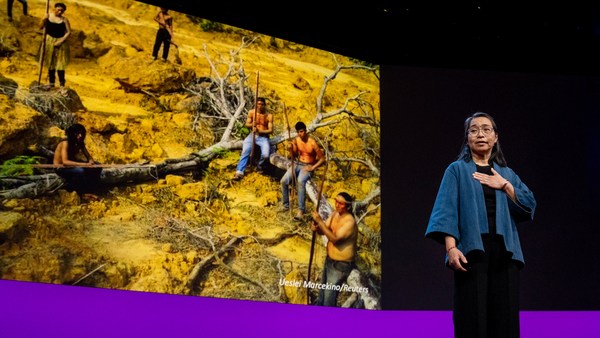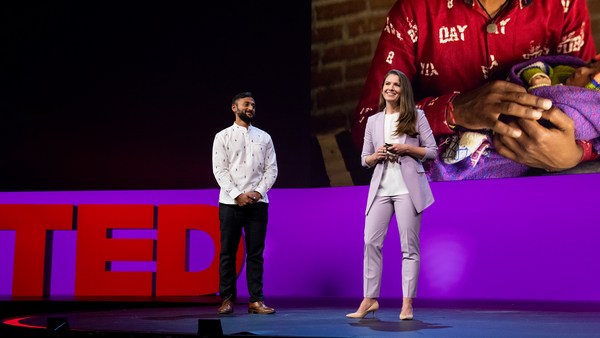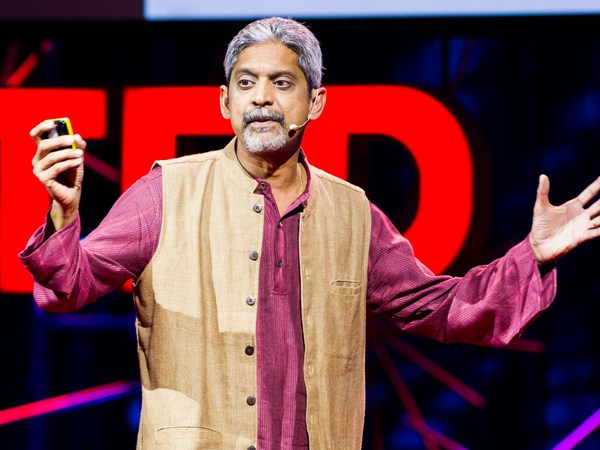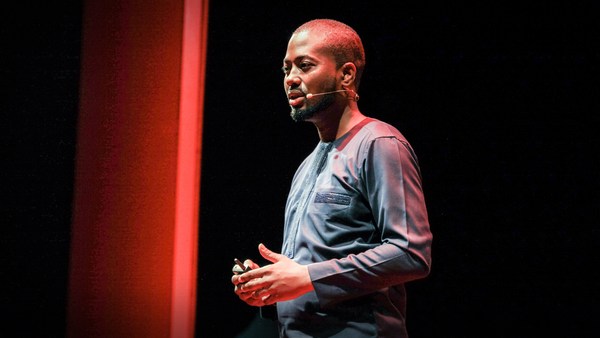There's a shocking statistic I want to share with you. Latin America is home to only eight percent of the world’s population but one third of its homicides. This is especially extreme in the Northern Triangle countries of Honduras, Guatemala and El Salvador, where I'm from and where I live. Just imagine the impact that this kind of unrelenting violence can have on a person's health, productivity and well-being. Especially because we know that if we're exposed to violence, this can result in trauma. And when that happens, our brain's stress response actually shuts down core functions like problem solving, critical thinking and emotional regulation. And it elevates the ones that we need to protect ourselves and survive. So this makes it really hard to learn to make decisions and even maintain relationships. It can also increase our risks of lung and heart disease, diabetes, anxiety and depression. So imagine what this can mean for entire communities when almost everybody can be walking around with unaddressed stress and trauma. Then picture what can happen as individual and collective trauma collide. To make matters worse, we know that exposure to violence can lead to more violence. Research has shown that survivors of violence can be up to six times more likely to either be involved in violence or be revictimized. It's literally the definition of a vicious cycle.
The good news is we know that we can interrupt this cycle by addressing the underlying trauma with better access to mental health care. The only problem is access to mental health care in these communities is virtually non-existent. So just to give you an idea, in the United States, there are about 270 mental health care workers for every 100,000 people. In Honduras, this drops to two. So we're left with this classic conundrum. We know how to help solve the problem, but we don't have the resources to do it. But what if we re-envision what or who these resources could be? I think we should, because there are ways to flood communities with access to mental health care. It’s already being done, and it’s working. And I want to tell you a little bit about how we're doing it at Glasswing.
We're training thousands of existing government employees like teachers, nurses, doctors and police officers on trauma education and self-care. We're essentially trying to create a whole core of lay mental health workers who are already serving on the front lines and can therefore step in and buffer the impacts of violence and trauma on themselves and on the communities they serve. We've trained health care workers to be able to recognize the signs of trauma, to be able to help patients understand what they're experiencing and equip them with tools to cope or refer them if they need it. We've actually seen that trauma-informed violence prevention work in hospitals can reduce the likelihood of revictimization by up to 30 percent.
(Applause)
In schools, we know that if children and adolescents have access to a caring adult that can help them cope with stress, their grades improve, their conduct improves and their resilience. And in our work with police, 90 percent of the police we trained actually felt better able to regulate their emotions and to deal with anxiety and fear. Eighty percent even told us that they felt better equipped to help their peers.
I want to share a story with you. Back in 2018, our Guatemala team was working in a community with really high rates of crime, violence and stigma. One of the schools we were working in is actually a school where kids ended up if they got expelled or if they got in trouble. So that's why Walter, a 17-year-old student, was really surprised and a little confused, when Eluvia, one of our trauma-informed school coordinators, showed up to recruit him and his friends to work at the local primary school. But Eluvia's from that community, and she knew that if she could empower a young man like Walter to become involved and become a school coordinator, she could not only transform his life but also the life of the kids he'd work with. So sure enough, a couple of weeks later, Walter was trained and leading a group of 20 little kids in a glee club. He loved it.
(Applause)
He loved it so much that he continued to show up every week for over two years.
But one afternoon, one of Walter's neighbors ran into the school screaming that Walter had to get home because his sister had been shot and killed. Walter sprinted out. And as he described it to me, he felt his mind and body go numb. Then he felt his heart start to race and his chest fill with rage. He knew who had killed his sister. And he ran up to his room to get a gun. Let me pause there for a sec. Do you remember what I told you a minute ago, about how violence can lead to more violence? That could have been Walter. But it wasn't. Because he told me that when he pictured his mentor, Eluvia, and the little glee club kids finding out that their role model had killed someone, he put the gun down. And that, that right there --
(Applause)
is where the cycle of violence stopped.
(Applause)
That's everything.
I have other stories like Walter and Eluvia's. But to interrupt and to stop this epidemic of violence, we need thousands more. And there are great ways to do this that are replicable. We know that we can provide more health care in communities provided by regular people. I’m talking about community, and I’m talking about systems change at the same time. First, we train everybody in public schools, public hospitals, clinics and police precincts on trauma, education and self care so they can better take care of themselves and also those that they serve understand trauma and manage it. Then we train a subset as interventionists so they can deal with emergencies, providing crisis intervention and ongoing support. And then we train a subset of those interventionists as trainers so they can continue to train their peers and they can train other organizations so we can have a growing network of trauma-informed services in each community. The great thing is this model is scalable and it’s cost-effective, because we're working within public systems with people that are already there.
So really, we know that violence happens between people, but so does healing. That's where it starts. So we know the power lies in people, in relationships, in a community healing itself.
One of my favorite quotes by Viktor Frankl in “Man’s Search for Meaning” is: "Between stimulus and response, there is a space. In that space is our power to choose our response. And in our response lies our growth and our freedom." Our goal is to literally infiltrate the space in between violent stimulus and response, with mental health knowledge and skills so that communities can pave their own way to healing and resilience.
Thank you so much.
(Applause and cheers)
